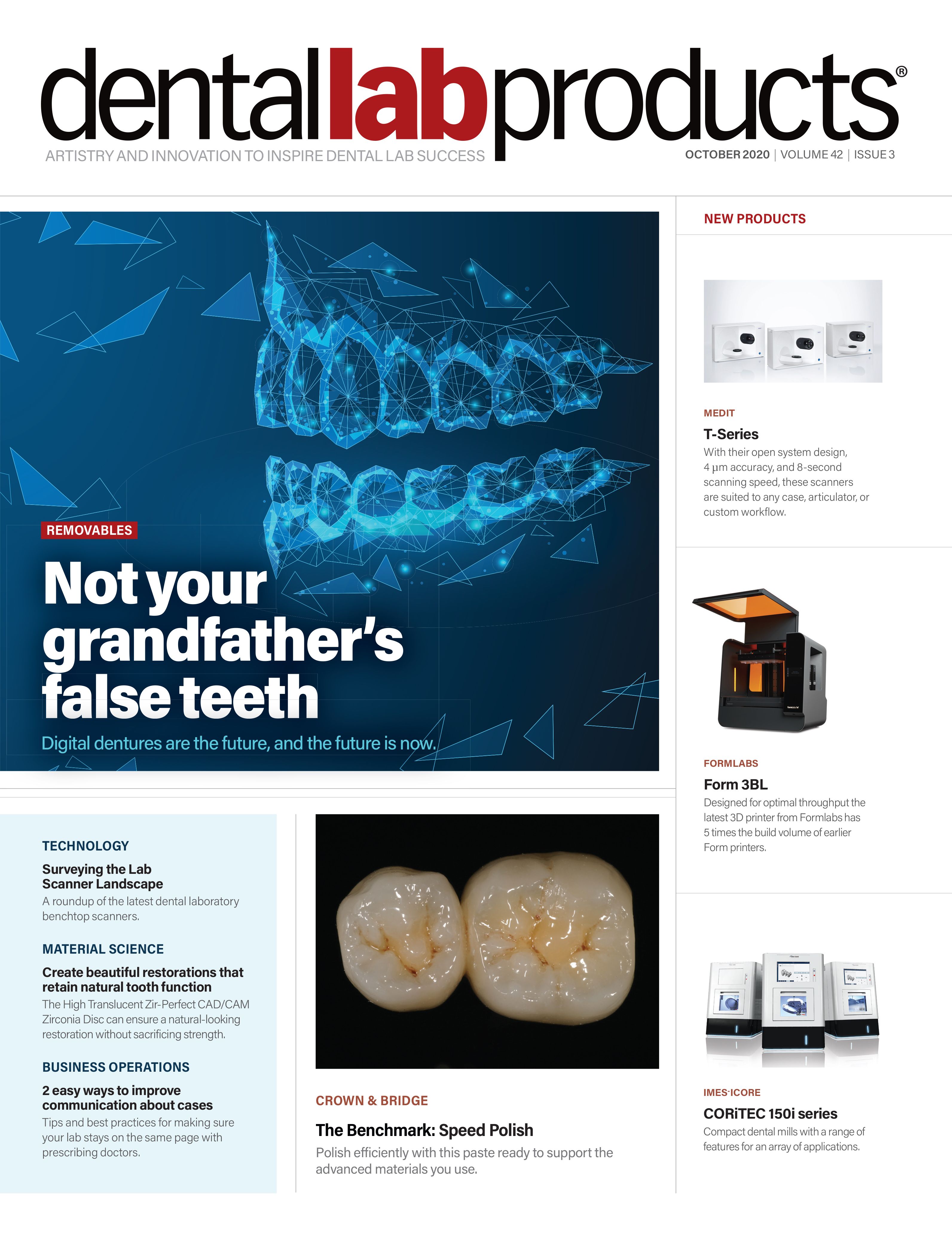2 easy ways to improve communication about cases
A pair of expert technicians share some of their favorites tools and tricks for improving communication with dentists.
elenabsl / stock.adobe.com

Success or failure, communication is a key component that can influence the outcome of every case that comes through a dental lab. Often, it’s the effectiveness of this communication between the practice and your lab that determines if the case meets the expectation of the doctor and the patient. Breakdowns in communication can mean incorrect information is used while designing and fabricating the restoration, which will then lead to a restoration that doesn’t provide proper fit, function, or esthetics.
Communicating is a two-way process, and it’s certainly not always the lab’s fault when key details get missed in the clinic-lab communication process. However, even when the communication breakdowns are clearly the fault of the practice, if the case doesn’t turn out as planned, the lab is the party that will need to remake the restoration. This means making sure you receive all the information you need and a process for managing questions or problems as they arise is extremely important for dental labs. With that in mind, here are a pair of tips from members of the Dental Lab Products® Editorial Advisory Board to help you improve the lines of communication between your lab and the practices sending you cases.
Jack Marrano, CDT
“Today more than ever HIPAA-compliant communication has come front and center in dental technology. Communication with clinicians is crucial to success of a case, these communications have become difficult to do while maintaining HIPAA compliance. This is partially due to the fact that some of today’s HIPAA compliance software has been difficult to communicate through, but I have found a compliant communications platform that works for me.
“Awrel (awrel.com), invented by Dr Arnie Rosen, is what we use to communicate with our clinicians. Awrel is a free, encrypted text messaging app that is HIPAA compliant. The app is simple to use and follows today’s text messaging format in which you can send text messages, upload and send photos as well as files—all while remaining secure and observing HIPAA compliance.”
Tom Zaleske
“When we speak of the need for communication in the fabrication of removable prosthetics, I take a proactive approach which not only includes the clinician, but also the patient.
“One way I do this is on specific cases that involve restoring only one arch is to provide a faux opposing appliance which is used to communicate the need for cross arch posterior support. In cases where patients are edentulous posteriorly, I place teeth which are made by duplicating denture teeth in self-cure resin on a baseplate. This not only aids in the arranging of teeth on the definitive appliance to be made in ideal positions, but also illustrates the need for support to adequately provide function expected from the new prosthetic to the patient.
“Many times, this communicates to the patient the need for ‘back teeth’ and they move toward considering either a definitive opposing restoration, or if a definitive restoration is economically unfeasible, converting the try-in set up to a wearable provisional one.”
These tips are just a few of the many ways dental labs can take charge to make sure communication with clinicians about cases includes every detail you need to complete your work, and that communication of patient health information is managed via secure, HIPAA-compliant channels.
